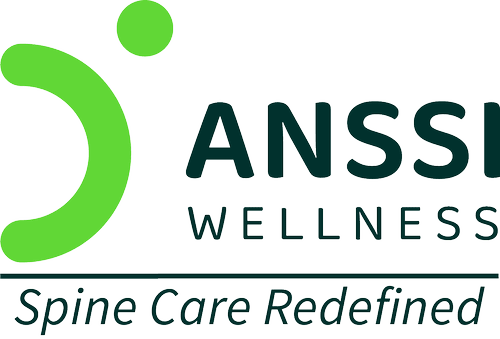Spinal stenosis is a fairly common condition, as more than 100 million people around the world suffer because of it. Here, the spaces within the spine narrow, putting pressure on the nerves and spinal cord. This may result in discomfort, numbness, and trouble moving. It primarily affects the lower back and neck, leading to mobility issues and discomfort.
Let’s understand its causes, symptoms, and treatment options, to find out the different ways to effectively manage it and improve the quality of one’s life.
What is Spinal Stenosis?
Spinal stenosis occurs when the spinal canal becomes narrow, reducing space for the spinal cord and nerves. Mobility issues, weakness, and pain may result from this compression. The condition is most commonly seen in older adults due to age-related spinal degeneration, but it can also develop due to injuries, herniated discs, or congenital factors.
There are two main types of spinal stenosis:
- Lumbar Stenosis: This is the most prevalent type of stenosis that affects the lower back.
- Cervical Stenosis: This type of stenosis affects the neck and if left untreated, can lead to serious problems.
Causes of Spinal Stenosis
Spinal stenosis can develop as a result of several factors, such as:
- Ageing: The natural wear and tear of the spine over time can lead to the narrowing of the spinal canal.
- Degenerative Changes: Conditions like osteoarthritis and disc degeneration cause bone spurs and thickened ligaments, leading to compression of the nerves.
- Herniated Discs: Pain and stiffness can result from pressure on the spinal cord and nerves caused by bulging or ruptured discs.
- Spinal Injuries: Accidents or trauma can cause fractures or dislocations, reducing space in the spinal canal.
- Congenital Conditions: Some individuals are born with a naturally narrow spinal canal, making them more prone to stenosis.
- Tumours: Growths within the spine may cause the spinal canal to compress and narrow.
Symptoms of Spinal Stenosis
Depending on the location and degree of spinal stenosis, the symptoms can change.
Common symptoms include:
- Back and Neck Pain: Constant neck or lower back discomfort brought on by nerve compression.
- Numbness and Tingling: Sensations of numbness or tingling in the arms, hands, legs, or feet.
- Weakness in Muscles: Muscle weakness that makes it difficult to stand, walk, or keep balance.
- Radiating Pain: Pain that spreads down the legs (sciatica) or arms.
- Difficulty Walking: Increased pain while walking or standing for long periods, relieved by sitting or bending forward.
- Loss of Bowel or Bladder Control: In severe cases, spinal stenosis can cause incontinence, requiring immediate medical attention.
Diagnosis of Spinal Stenosis
A proper diagnosis is essential to determine the severity and cause of spinal stenosis.
The diagnostic process includes:
1. Physical Examination: The doctor checks for pain, muscle weakness, and range of motion.
2. Medical History Assessment: A review of symptoms, past injuries, and family history of spinal disorders is conducted.
3. Imaging Tests:
- X-rays: To detect bone spurs or structural changes in the spine
- MRI (Magnetic Resonance Imaging): To provide detailed images of the spinal cord, nerves, and soft tissues
- CT Scan with Myelogram: To highlight compression areas by injecting a dye into the spinal canal
Treatment Options for Spinal Stenosis
Spinal stenosis can be a debilitating condition, but with proper diagnosis and treatment, individuals can manage symptoms effectively.
Non-Surgical Treatments:
- Spinal Decompression Treatment: A non-invasive treatment that gently stretches the spine to relieve pressure on nerves.
- Physical Therapy: Stretching and strengthening techniques that help increase range of motion and lessen discomfort.
- Medications: Painkillers, muscle relaxants, and anti-inflammatory medications that can help control symptoms.
- Epidural Steroid: Injections that can reduce inflammation and provide temporary pain relief.
- Lifestyle Modifications: Changes that include maintaining a healthy weight, using ergonomic support, and avoiding prolonged standing or sitting.
Surgical Treatments (For Severe Cases):
Surgery may be considered if non-surgical measures are ineffective:
- Laminectomy: Removing a section of the vertebra to make room for the spinal cord.
- Foraminotomy: Widening of the openings where nerves exit the spine.
- Spinal Fusion: Stabilising the spine by joining two or more vertebrae.
Prevention and Management of Spinal Stenosis
While spinal stenosis cannot always be prevented, certain lifestyle changes can help manage symptoms and slow progression:
- Regular Exercise: To enhance spinal support, strengthen your back and core muscles.
- Posture Correction: Maintain proper posture while sitting, standing, and lifting to reduce strain on the spine.
- Healthy Diet: Consume calcium and vitamin D-rich foods to support bone health.
- Avoid Heavy Lifting: Use proper lifting techniques or avoid heavy loads to prevent spinal stress.
- Stress Management: Adopt yoga, meditation, and relaxation techniques to help reduce muscle tension and pain.
About ANSSI:
ANSSI Wellness focuses on improving the quality of life for patients suffering from spinal issues, aiming to provide relief where other conventional treatments have failed. Through advanced non-surgical spinal decompression treatment, ANSSI is committed to helping patients avoid surgery and recover in a safe, effective, and compassionate environment.
Connect with ANSSI Wellness on LinkedIn, Instagram, and Facebook for expert guidance.



